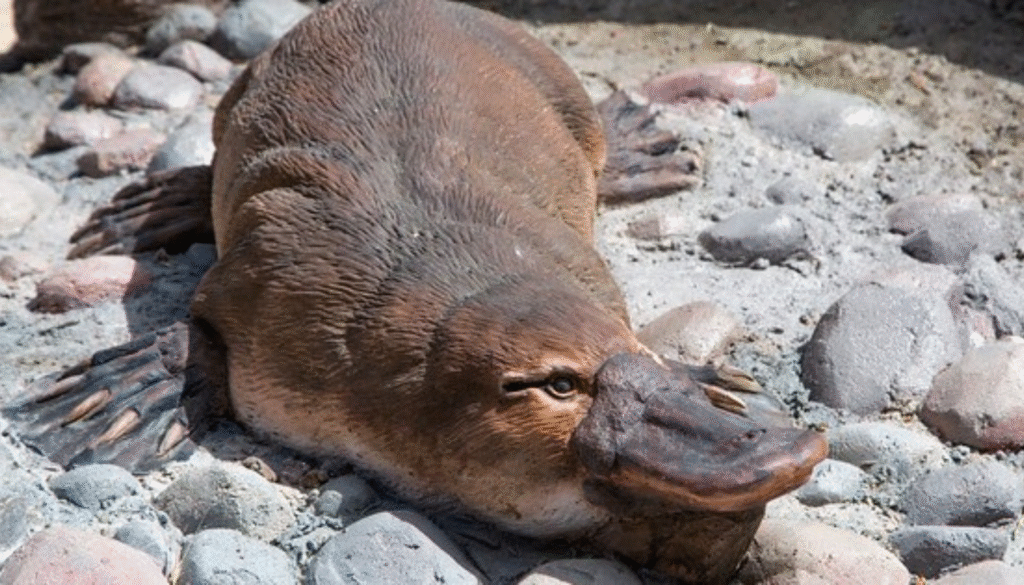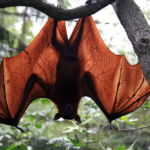If someone described an animal with a duck bill, a beaver tail, webbed feet, venomous spurs, and the ability to lay eggs and produce milk—without nipples—you might think they were joking.
But this creature is 100% real.
Meet the platypus (Ornithorhynchus anatinus), one of the most unique animals on Earth, and a walking (or swimming) contradiction. Found only in eastern Australia and Tasmania, this strange little mammal has puzzled scientists since its discovery—and continues to blow minds today.
Let’s dive into what makes the platypus so weird—and so fascinating.
1. A Mammal That Lays Eggs
Mammals are supposed to give birth to live young… right? Not the platypus.
It’s one of only five existing species of monotremes, a group of egg-laying mammals (the others are echidnas).
Female platypuses lay 1–3 leathery eggs and incubate them in burrows. After hatching, the babies—called “puggles”—are fed with milk secreted through pores in the mother’s skin.
No nipples. No problem.
2. The Duck-Bill That’s Actually a Super Sensor
That iconic “duck bill” isn’t just for show. It’s a super-sensitive hunting tool packed with electroreceptors.
This means the platypus can:
- Detect electric fields produced by muscle contractions in prey
- Hunt underwater with its eyes, ears, and nostrils closed
- Sense tiny movements in mud or water, even in total darkness
It’s like having a built-in biological radar system.

3. Webbed Feet and a Beaver Tail
The platypus is perfectly designed for a semi-aquatic lifestyle:
- Front feet are webbed and used like paddles for swimming.
- Back feet steer and stabilize.
- The flat tail stores fat and helps with balance in water and on land.
It glides gracefully underwater and waddles clumsily on land—just part of its charm.
4. Venomous Spurs (Yes, Really)
Male platypuses have venomous spurs on their hind legs, which they use during fights in the mating season.
The venom:
- Can cause intense pain and swelling in humans
- Is not deadly, but has no known antivenom
- Is thought to be used mainly against rivals, not predators
It’s one of the few venomous mammals on Earth—and yet another reason not to mess with this adorable oddball.
5. They Glow Under UV Light
As if they weren’t strange enough, scientists recently discovered that platypuses are biofluorescent!
Under ultraviolet (UV) light, their fur glows blue-green—though the purpose of this glow is still unknown.
Some theories suggest:
- It may help with camouflage in moonlight
- It could play a role in communication or mating
One thing’s for sure: they just got even weirder.
6. Their Genome Is a Genetic Puzzle
When scientists sequenced the platypus genome, they found a mix of mammal, bird, and reptile genes.
- They have genes for egg-laying like reptiles
- Milk-producing genes like mammals
- And some features that don’t match any known group exactly
It’s like the platypus is a living fossil, holding clues about how mammals evolved.
Some researchers call it a “genetic Frankenstein”—but in the best possible way.
7. Conservation and Protection
Platypuses are not endangered, but their populations are under pressure due to:
- Habitat destruction
- Water pollution
- Droughts and climate change
They are protected by law in Australia, and several conservation projects are working to study and protect them.
Because if we lose the platypus, we lose one of the most mysterious links in the tree of life.
Final Thoughts: Weird, Wonderful, and Wildly Unique
The platypus doesn’t fit into a neat category—and that’s exactly what makes it so special.
It challenges our assumptions about biology. It connects distant branches of evolution. And it proves that nature doesn’t follow our rules—it writes its own.
In a world full of predictable creatures, the platypus is a reminder that sometimes the weirdest things are also the most fascinating.



